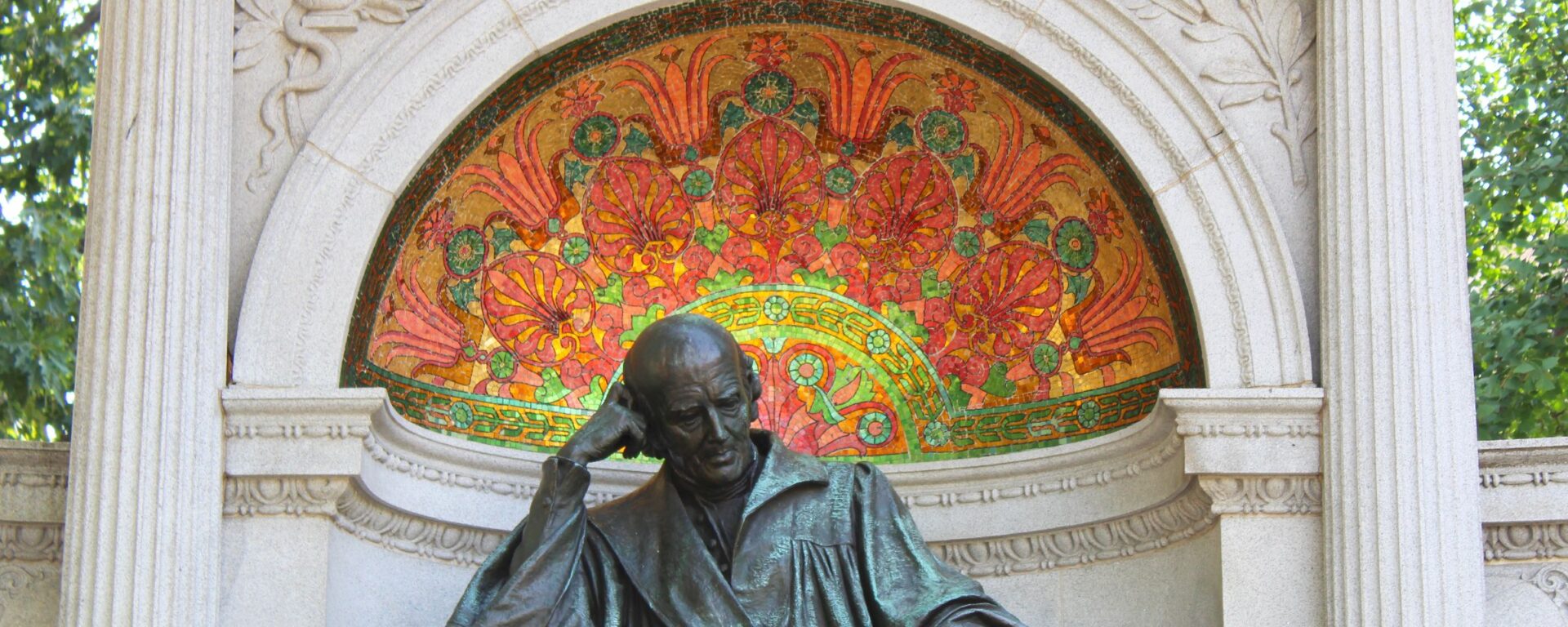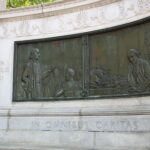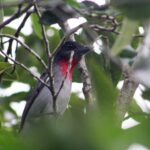“The physician’s highest calling, his only calling, is to make sick people healthy.”
In a triangular park on the east side of Scott Circle is one of the least known and most beautiful monuments in Washington. Bounded by Corregidor Street, Massachusetts Avenue, and Rhode Island Avenue, the bronze statue of Hahnemann – the progenitor of homeopathy – faces west toward the monuments to General Winfield Scott and Daniel Webster.

The monument was dedicated in June 1900 in a ceremony attended by President William McKinley, a proponent of homeopathy. It was the first monument in the Capitol to a foreigner who had never been to America and had no association with it. The ceremony took place during a convention for the American Institute of Homeopathy and was attended by many medical professionals.

The statue at the center of the Hahnemann Memorial was created by American-born artist Charles Henry Niehaus. Niehaus has statues across the country, including the John Paul Jones memorial near the tidal basin. Niehaus’ sculpture of Hahnemann sits in the middle of an exedra – a semicircular platform – with two bronze reliefs to either side depicting scenes from his life. Above the statue’s head, in a niche, is an art nouveau ceramic mosaic that distinguishes it from the other outdoor sculpture of D.C.
Hahnemann’s legacy to the world is the pseudoscience of homeopathy. He had initially studied to be a doctor, but at that time medicine was primitive and barbaric. Bloodletting was a common practice, as was the prescription of untested medicines. Hahnemann was uncomfortable administering these treatments and gave up the practice of medicine in 1784, working as a medical translator for many years.
During this time he came across an account of the bark of a particular Peruvian tree being effective in treating malaria. Curious, he ingested some of this bark and found that it induced symptoms similar to malaria and concluded “that which can produce a set of symptoms in a healthy individual, can treat a sick individual who is manifesting a similar set of symptoms.” This hypothesis is often expressed as “like cures like.”
Hahnemann completed The Organon of the Healing Art – the overview of his medical ideas – in 1810. Over the next 110 years, five more editions would be released. Homeopathic ideas flourished until the early 20th century and live on today despite widespread scrutiny. While time has shown that homeopathic principles are not scientifically valid, the motivations for Hahnemann to develop them are rooted entirely in his desire to help his fellow man.

Resources used for this article:
https://en.wikipedia.org/wiki/Samuel_Hahnemann
https://en.wikipedia.org/wiki/Samuel_Hahnemann_Monument
https://en.wikipedia.org/wiki/Charles_Henry_Niehaus
http://www.sciencemuseum.org.uk/broughttolife/people/samuelhahnemann






One thought on “Samuel Hahnemann”
Comments are closed.